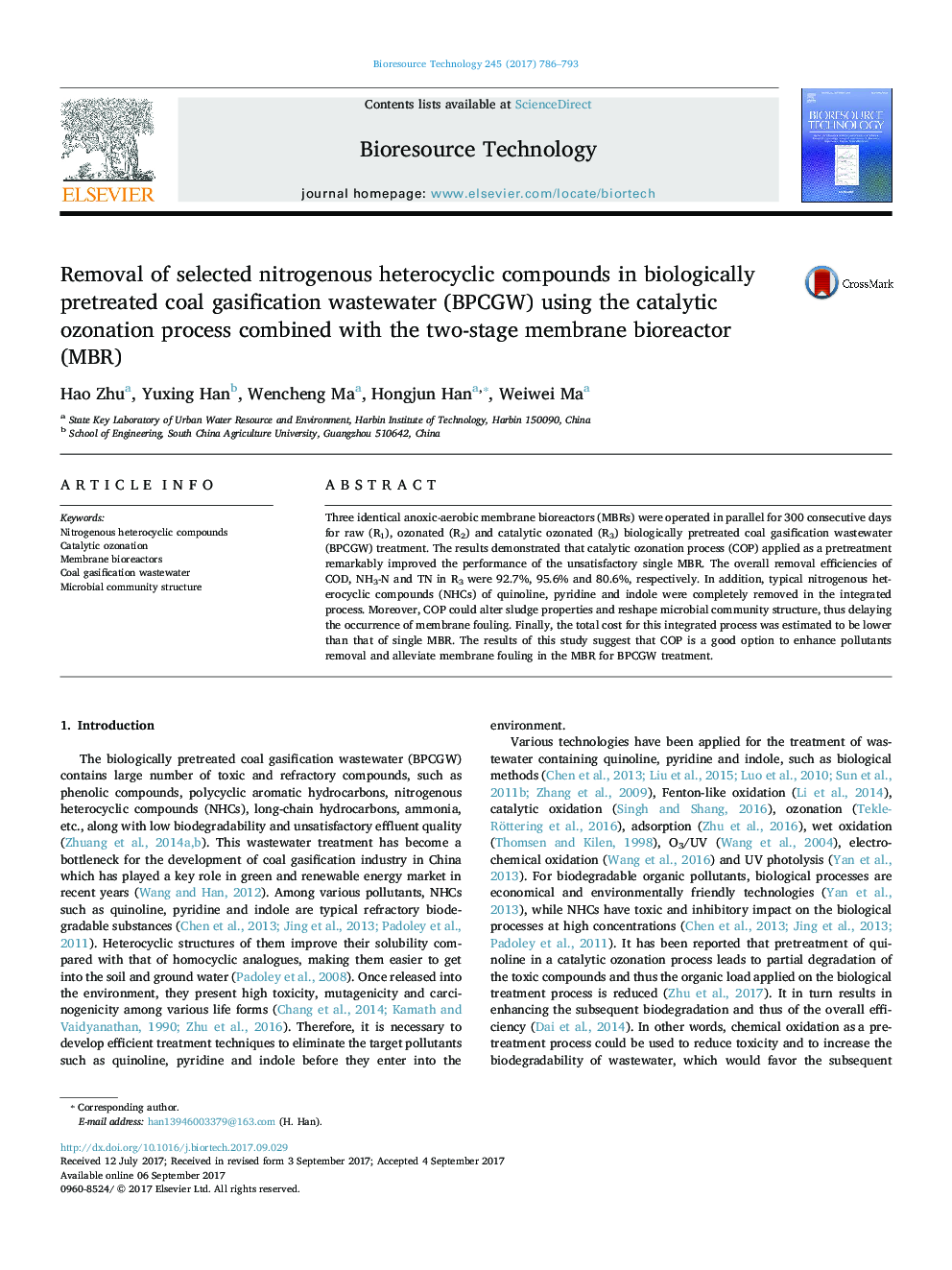| Article ID | Journal | Published Year | Pages | File Type |
|---|---|---|---|---|
| 4996792 | Bioresource Technology | 2017 | 8 Pages |
â¢Catalytic ozonation process (COP) reduced the pollutants and enhanced the subsequent biodegradation.â¢COP could delay the occurrence of membrane fouling by altering sludge properties and reshaping microbial community structure.â¢Acidovorax was the most dominant bacterial genus in the MBR.â¢The total cost for the integrated process was estimated to be lower than that of single MBR.
Three identical anoxic-aerobic membrane bioreactors (MBRs) were operated in parallel for 300 consecutive days for raw (R1), ozonated (R2) and catalytic ozonated (R3) biologically pretreated coal gasification wastewater (BPCGW) treatment. The results demonstrated that catalytic ozonation process (COP) applied as a pretreatment remarkably improved the performance of the unsatisfactory single MBR. The overall removal efficiencies of COD, NH3-N and TN in R3 were 92.7%, 95.6% and 80.6%, respectively. In addition, typical nitrogenous heterocyclic compounds (NHCs) of quinoline, pyridine and indole were completely removed in the integrated process. Moreover, COP could alter sludge properties and reshape microbial community structure, thus delaying the occurrence of membrane fouling. Finally, the total cost for this integrated process was estimated to be lower than that of single MBR. The results of this study suggest that COP is a good option to enhance pollutants removal and alleviate membrane fouling in the MBR for BPCGW treatment.
